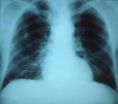(Press-News.org) (Garrison, NY) As the presidential candidates clash over the fate of the Affordable Care Act, a set of seven essays by leading legal experts, economists, and scholars examines the implications of the Supreme Court's decision on the ACA and makes it clear that there is no consensus about what is economically or morally just when it comes to health care coverage in this country. The essays appear in the Hastings Center Report.
While the essays provide a range of perspectives, a few common themes emerge. Foremost among them is that the individual mandate may not work as it stands.
Mark A. Hall, a professor of law and public health at Wake Forest University, argues that the Court "significantly weakened the individual mandate" by allowing Americans to opt out of insurance coverage if they are willing to pay a tax. This tax penalty leaves the mandate vulnerable because Congress could repeal it through the budget reconciliation process, he says.
Mark V. Pauly, of the Wharton School of Business, offers a contrasting view. While he supports the idea of a mandate, he is concerned that in its present form it may not achieve its goal of getting as many people as possible to buy insurance because the penalty for not doing so is too low – for some groups, far less than the annual cost of premiums. Pauly also raises the possibility that the mandate could increase health care costs by increasing the number of procedures that the government requires insurers to cover.
Other essays raise concerns about costs. To be fair, writes Paul T. Menzel, a philosopher at Pacific Lutheran University, mandated insurance must be for care that is disciplined and cost-effective. "The cost-control provisions include some laudable next steps but are generally weak," he concludes.
James Stacey Taylor, an associate professor of philosophy at The College of New Jersey, states that the ACA's benevolent appearance is deceptive and that it is "neither economically sound nor morally acceptable." He argues that simply implementing the law will require "a small army of lawyers and bureaucrats," which will raise health care costs.
Several other essays examine what is morally acceptable in the health care arena. While none of them makes a moral case for health reform as a question about an individual's right to health care, they discuss other relevant values: responsibility, community, sympathy, and stewardship. Len M. Nichols, a health economist, professor of health policy, and director of the Center for Health Policy Research and Ethics at George Mason University, focuses on stewardship over health care resources, arguing that all Americans should be assured adequate health care. Although the challenges are great, Nichols suggests we now have the opportunity to remake our health care system into one that serves everyone. Those who oppose the government's role in attaining this goal are willing to stand by while tens of millions of Americans live without health care, he says. "A society that aspires to morality aims higher than that, and our Supreme Court has, by the narrowest of margins, allowed us to continue to dream big," Nichols writes.
William M. Sage, a professor and Vice Provost for Health Affairs at the University of Texas at Austin's School of Law, notes that the Supreme Court decision emphasizes the value of protecting personal liberty from government dominion, but in doing so both highlights the absence of solidarity around health reform and magnifies the importance of developing it.
Timothy Stolzfus Jost, who holds the Robert L. Willett Family Professorship of Law at Washington and Lee University, concludes his essay with a statement that might represent the only true consensus about health care reform: "The struggle for the soul of health insurance in the United States may be far from over."
### END
Survival of the affordable care act assessed in new commentaries
2012-10-25
ELSE PRESS RELEASES FROM THIS DATE:
Gene linked to inflammation in the aorta may contribute to abdominal aortic aneurysm
2012-10-25
A gene known to be involved in cancer and cardiovascular development may be the cause of inflammation in the most common form of aortic aneurysm and may be a key to treatment, according to research from Nationwide Children's Hospital. The study, appearing online in Arteriosclerosis, Thrombosis, and Vascular Biology on October 18, 2012, is the first to show that Notch 1 signaling is activated in abdominal aortic aneurysmal tissue in mice and humans.
The aorta is the largest blood vessel in the body. Abdominal aortic aneurysm (AAA) occurs when the weakened aortic wall dilates ...
Results of the ETAP trial presented at TCT 2012
2012-10-25
MIAMI, FL – OCTOBER 24 , 2012 – A study found that a nitinol stent performed better than balloon angioplasty alone in treating blockages of the popliteal artery, which runs through the leg behind the knee. Results of the ETAP trial were presented today at the 24th annual Transcatheter Cardiovascular Therapeutics (TCT) scientific symposium. Sponsored by the Cardiovascular Research Foundation (CRF), TCT is the world's premier educational meeting specializing in interventional cardiovascular medicine.
Due to its location behind the mobile knee joint, it is controversial ...
Brain waves reveal video game aptitude
2012-10-25
CHAMPAIGN, Ill. — Scientists report that they can predict who will improve most on an unfamiliar video game by looking at their brain waves.
They describe their findings in a paper in the journal Psychophysiology.
The researchers used electroencephalography (EEG) to peek at electrical activity in the brains of 39 study subjects before they trained on Space Fortress, a video game developed for cognitive research. The subjects whose brain waves oscillated most powerfully in the alpha spectrum (about 10 times per second, or 10 hertz) when measured at the front of the head ...
Results of the TRILOGY ACS Angiographic Cohort presented at TCT 2012
2012-10-25
MIAMI, FL – OCTOBER 24, 2012 – A study has found that the anti-clotting medication prasugrel reduced cardiovascular events among patients who present with an acute coronary syndrome and are managed medically after an angiogram is performed to determine coronary anatomy. Results of the TRILOGY ACS trial, Angiographic Cohort were presented today at the 24th annual Transcatheter Cardiovascular Therapeutics (TCT) scientific symposium. Sponsored by the Cardiovascular Research Foundation (CRF), TCT is the world's premier educational meeting specializing in interventional cardiovascular ...
Large-scale production of biofuels made from algae poses sustainability concerns
2012-10-25
WASHINGTON — Scaling up the production of biofuels made from algae to meet at least 5 percent -- approximately 39 billion liters -- of U.S. transportation fuel needs would place unsustainable demands on energy, water, and nutrients, says a new report from the National Research Council. However, these concerns are not a definitive barrier for future production, and innovations that would require research and development could help realize algal biofuels' full potential.
Biofuels derived from algae and cyanobacteria are possible alternatives to petroleum-based fuels and ...
A sense of control, even if illusory, eliminates emotion-driven distortions of time
2012-10-25
CHAMPAIGN, Ill. — We humans have a fairly erratic sense of time. We tend to misjudge the duration of events, particularly when they are emotional in nature. Disturbingly negative experiences, for example, seem to last much longer than they actually do. And highly positive experiences seem to pass more quickly than negative ones.
Researchers say they have found a way to lessen these emotion-driven time distortions. Having a sense of control over events reduces the influence of emotions on time perception, the researchers report. This is true even for highly reactive emotional ...
FFR-guided PCI shows cost-effectiveness when compared to medical therapy for stable CAD
2012-10-25
MIAMI, FL – OCTOBER 24, 2012 –A strategy of up-front percutaneous coronary intervention (PCI) for lesions confirmed to be obstructive by fractional flow reserve (FFR) was shown to be cost-effective in terms of quality-adjusted life years when compared to medical therapy alone. Results of the Cost-Effectiveness sub study of the FAME 2 trial were presented today at the 24th annual Transcatheter Cardiovascular Therapeutics (TCT) scientific symposium. Sponsored by the Cardiovascular Research Foundation (CRF), TCT is the world's premier educational meeting specializing in interventional ...
Study confirms benefits of transcatheter aortic valve replacement over 3 years
2012-10-25
MIAMI, FL – OCTOBER 24, 2012 – A study found that transcatheter aortic valve replacement (TAVR) yielded lower mortality rates after three years compared with medical therapy in patients deemed to be ineligible for conventional aortic valve surgery. Results of the PARTNER Cohort B trial were presented today at the 24th annual Transcatheter Cardiovascular Therapeutics (TCT) scientific symposium. Sponsored by the Cardiovascular Research Foundation (CRF), TCT is the world's premier educational meeting specializing in interventional cardiovascular medicine.
TAVR is the recommended ...
Results of the ISAR-LEFT MAIN 2 trial presented at TCT 2012
2012-10-25
MIAMI, FL – OCTOBER 24, 2012 – A study found that second-generation drug-eluting stents are safe and effective in the treatment of left main coronary artery lesions. Results of the ISAR-LEFT MAIN 2 trial were presented at the 24th annual Transcatheter Cardiovascular Therapeutics (TCT) scientific symposium. Sponsored by the Cardiovascular Research Foundation (CRF), TCT is the world's premier educational meeting specializing in interventional cardiovascular medicine.
Patients undergoing invasive treatment of unprotected left main coronary artery (uLMCA) lesions are often ...
Scientists target bacterial transfer of resistance genes
2012-10-25
CHAMPAIGN, Ill. — The bacterium Streptococcus pneumoniae – which can cause pneumonia, meningitis, bacteremia and sepsis – likes to share its antibiotic-defeating weaponry with its neighbors. Individual cells can pass resistance genes to one another through a process called horizontal gene transfer, or by "transformation," the uptake of DNA from the environment.
Now researchers report that they can interrupt the cascade of cellular events that allows S. pneumoniae to swap or suck up DNA. The new findings, reported in the journal PLoS ONE, advance the effort to develop ...


